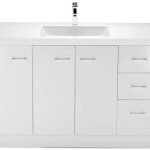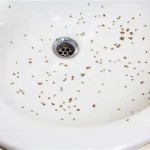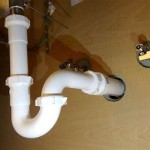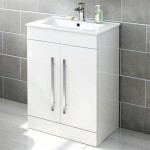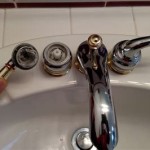Understanding the Bathroom Sink Overflow Drain Diagram
Bathroom sinks are designed with an overflow drain, a crucial feature that prevents water from spilling onto the floor if the faucet is left running unattended. This safety mechanism relies on a series of interconnected components working together. Understanding the overflow drain diagram allows for effective troubleshooting and repair of potential issues.
The overflow drain is typically located near the top of the sink basin, appearing as a small opening or series of holes along the inside rim. This opening connects to a channel or passage concealed within the sink's construction. This channel leads down to the main drainpipe, providing an alternate pathway for water to escape.
A critical component within the drain assembly is the pop-up stopper. This assembly controls the flow of water down the drain. It typically consists of a stopper body, a pivot rod, and a clevis strap. The pivot rod, connected to the stopper body, extends down through the drainpipe and connects to the clevis strap. Lifting the pivot rod raises the stopper, allowing water to drain. Pushing down on the rod closes the stopper, sealing the drain opening.
The drainpipe itself plays a vital role in the overall system. It connects to the tailpiece, which extends down from the sink drain opening. The tailpiece then connects to a P-trap. The P-trap, a U-shaped section of pipe, holds a small amount of water, creating a seal that prevents sewer gases from entering the bathroom. Below the P-trap, the drainpipe connects to the main drain line.
When the sink is filled past the level of the overflow drain opening, water begins to flow into the overflow channel. This channel directs the excess water down to the main drainpipe, bypassing the stopper. This prevents the sink from overflowing, even if the stopper is closed.
Understanding the relationship between these components is essential for diagnosing and resolving common sink drainage issues. A slow-draining sink, for example, might indicate a partially clogged drainpipe or a malfunctioning pop-up stopper. Water leaking from beneath the sink could signify a loose connection between the tailpiece and the P-trap, or a damaged P-trap.
A detailed bathroom sink overflow drain diagram typically illustrates each component of the system, including the overflow drain opening, the internal channel, the pop-up stopper assembly, the tailpiece, the P-trap, and the drainpipe. These diagrams often provide a cross-sectional view of the sink and drain assembly, offering a clear visualization of how the components connect and function.
When consulting a diagram, it’s important to note the specific design of the sink and drain assembly. While the basic principles of overflow drain functionality remain consistent, the precise configuration of components may vary depending on the manufacturer and model of the sink. Therefore, referencing a diagram specific to the sink in question is crucial for accurate troubleshooting and repair.
Several resources offer access to bathroom sink overflow drain diagrams. Manufacturer websites often provide detailed diagrams and installation instructions for their specific sink models. Plumbing supply stores and online retailers may also offer diagrams and guides for various types of sinks and drain assemblies. Additionally, numerous online tutorials and videos demonstrate the functionality of overflow drains and provide step-by-step instructions for common repair procedures.
By understanding the components and their relationships within the overflow drain system, individuals can address minor plumbing issues effectively and prevent more significant problems from developing. Regular maintenance, such as cleaning the drain and checking for leaks, can also contribute to the longevity and proper function of the bathroom sink.
Diagram variations exist, sometimes incorporating different types of pop-up assemblies, like push-button or lift-and-turn stoppers. These function similarly to the lever-operated pop-up, controlling the stopper position to seal or open the drain. Understanding these variations requires careful examination of the relevant diagram.
In some instances, the overflow channel might be integrated within the sink’s design, concealed from direct view. These integrated channels perform the same function of diverting excess water to the drain, but their hidden nature requires careful consideration when troubleshooting. Referring to a specific diagram is essential for understanding these hidden pathways.
Drain configurations can also vary, particularly regarding the type of P-trap used. While the standard P-trap is common, some installations might utilize a bottle trap. This type of trap incorporates a chamber that collects debris, potentially preventing clogs further down the drain line. A diagram will clarify the type of trap installed.
Understanding the specific design and components of a bathroom sink's overflow drain system is critical for effective maintenance and repair. Utilizing a detailed diagram specific to the sink model ensures accurate troubleshooting and facilitates proper resolution of any drainage issues.

Fix For Smelly Sink So Ready A New House Bathroom Drain Cleaning Drains

How To Repair An Old Clawfoot Tub Overflow Gasket Types Explained Diagram Image Search Results In 2024 Bathtub Drain Shower Plumbing
Drain Spacer Gasket Kit For Bathroom Sinks

Iapmo

How To Fit A Bathroom Sink Diy Guides Victorian Plumbing

11 Types Of Bathroom Sink Drains Both With And Without Overflow Guide For Kitchen Bath Fixtures Faucets

Novatto Rectangular Porcelain Vessel Sink In White With Overflow Drain Brushed Nickel Np 018131bn The Home Depot

Black Oil Rubbed Broe Bathroom Vessel Sink Pop Up Drain Without Overflow
What Is The Hole On Side Of Sink Closest To You And Across From Faucet For Why Do Bubbles Come Out There Quora

Basin And Sink Drain Accessories Retro Pop Up Stopper Without Overflow Broed
Related Posts
